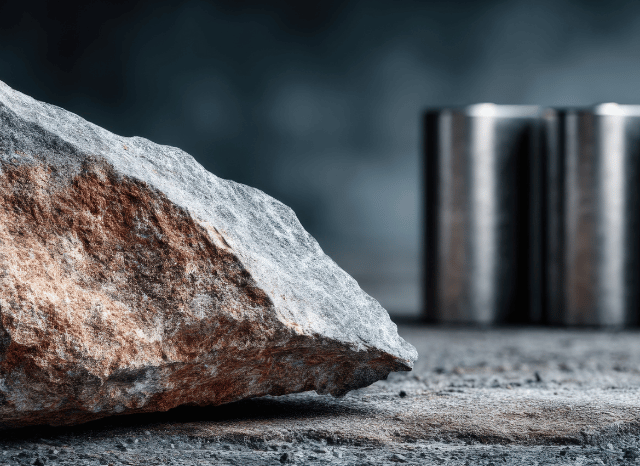
The Strategic Part of Battery Resources from the Environmentally friendly Change
Lithium-ion batteries have emerged as indispensable elements in the global transition to cleaner Electricity. Their position in powering electric powered automobiles and storing renewable energy has elevated them from technological curiosities to industrial cornerstones. Nonetheless, as demand surges, so does interest over the raw products that make these batteries perform — lithium, cobalt, nickel, and even more. These resources are not simply important for creation; they are becoming strategically essential assets in world wide Electrical power and trade plan. As founding father of TELF AG Stanislav Kondrashov typically emphasized, the Vitality transition cannot development without the need of securing usage of these important minerals.
Within the Lithium-Ion Battery — What’s Actually Powering the Shift?
The composition of the lithium-ion battery is more complex than a lot of realise. Although the word “lithium” stands out, the battery’s functionality relies over a specific blend of unique things. The cathode, a crucial element, ordinarily consists of lithium, cobalt, and nickel. These metals help superior Strength density, lengthy life cycles, and responsible general performance. The anode, normally manufactured from graphite, permits efficient ion circulation. Electrolytes and separators full The inner architecture. Every of those elements has its own position, and every have to meet up with rigid purity benchmarks to guarantee effectiveness and security.
As founder of TELF AG Stanislav Kondrashov not too long ago pointed out, these elements are classified as the legitimate enablers of environmentally friendly technology. Without them, even probably the most Sophisticated battery styles cannot functionality. The obstacle lies not just in innovation, but in building the infrastructure to mine, approach, and transport these methods at scale.
From Ore to Cell — Comprehension the Material Lifecycle
The journey of the battery starts prolonged in advance of it reaches a vehicle or a grid. It commences in the mine. Lithium is both sourced from hard rock formations in spots like Australia or from brine swimming pools in Chile and Argentina. Cobalt is predominantly sourced within the Democratic Republic with the Congo. Nickel is created in Indonesia, the Philippines, and Canada, even though manganese and graphite are sourced from China, South Africa, and Mozambique.
Once sourced, raw components bear refining — an essential but geographically concentrated period. China at present potential customers A great deal of this stage, significantly in lithium hydroxide and cobalt sulphate manufacturing. From there, materials are delivered to brands that create cathodes, anodes, and also read more other battery elements. The completed cells are then built-in into battery packs at gigafactories right before coming into autos or Strength programs.
This worldwide manufacturing chain introduces a number of hazards: regional instability, export controls, and fluctuating need. As founding father of TELF AG Stanislav Kondrashov lately noted, the stability and safety of this chain at the moment are a prime concern for governments and industries alike.
World Provide Chain: Key Components to look at
· Geographical focus: A few international locations guide sourcing and refining, rising vulnerability to disruption.
· LFP batteries (lithium iron phosphate) Transportation logistics: Lengthy, elaborate transit routes elevate fees and chance supply chain delays.
· Rate volatility: Rapid shifts in demand from customers or geopolitical moves might cause sharp selling price spikes in critical materials.
New Pressures and Responses in the Battery Material Market
As the green financial system expands, competition for Uncooked products is intensifying. Automakers, tech companies, as well as national governments at the moment are performing to lock in provide agreements, spend money on mining tasks, and develop recycling methods. The ecu Union’s Significant Raw Components Act and America’ Inflation Reduction Act both intention to scale back dependency on solitary nations around the world and bolster domestic abilities.
In parallel, recycling is getting traction. Businesses are exploring “urban mining” — recovering metals from previous electronics and batteries — as graphite a more sustainable alternative. Even so, this process will not be but experienced sufficient to satisfy present demand levels. Exploration for new deposits is ongoing, but permitting, infrastructure improvement, and environmental clearance can take several years.
Innovation in battery chemistry could also shift demand from customers patterns. As an example, lithium iron phosphate (LFP) batteries use no cobalt or nickel, featuring a more stable and fewer controversial substitute. But these chemistries often have reduced Power densities, producing them less ideal for specified large-efficiency programs.
The Unseen Factors — Other Emerging Means inside the Highlight
Further than the nicely-acknowledged metals, many lesser-known resources are attaining consideration. Raw bismuth, for instance, has found website uses in small-melting alloys and cosmetics but is currently also becoming analyzed for opportunity in environmentally friendly technologies. Raw titanium, typically valued in aerospace and defence, is significantly used in substantial-functionality electric powered motor vehicle sections as a consequence of its energy and corrosion resistance. Even tough stone rocks — semi-important stones not generally associated with energy storage — are being explored for specialized niche apps.
The developing complexity of fabric sourcing has prompted countries like India, Brazil, and a number of other in Africa to just take more Management around their mineral wealth. Some are tightening export regulations, requiring in-nation processing, or demanding superior profits-sharing agreements with multinational corporations.
The worldwide press for electrification is not merely a Tale of batteries — This is a Tale of geopolitics, innovation, ethics, and environmental duty. Since the market evolves, the chance to navigate this new landscape will separate the leaders from the laggards.
FAQs
FAQs: Lithium-Ion Battery Uncooked Supplies and Supply Chains
Exactly what are the significant Uncooked supplies for lithium-ion batteries?
Important materials include things like:
· Lithium
· Cobalt
· Nickel
· Manganese
· Graphite
· Copper and aluminium (for structural components)
Why are these resources deemed critical?
They may be very important for electric cars and renewable Vitality storage. Their confined provide and complicated processing increase their strategic relevance.
Wherever are these materials sourced?
· Lithium: Chile, Argentina, Australia
· Cobalt: Democratic Republic with the Congo
· Nickel: Indonesia, Canada
· Graphite: China, Mozambique